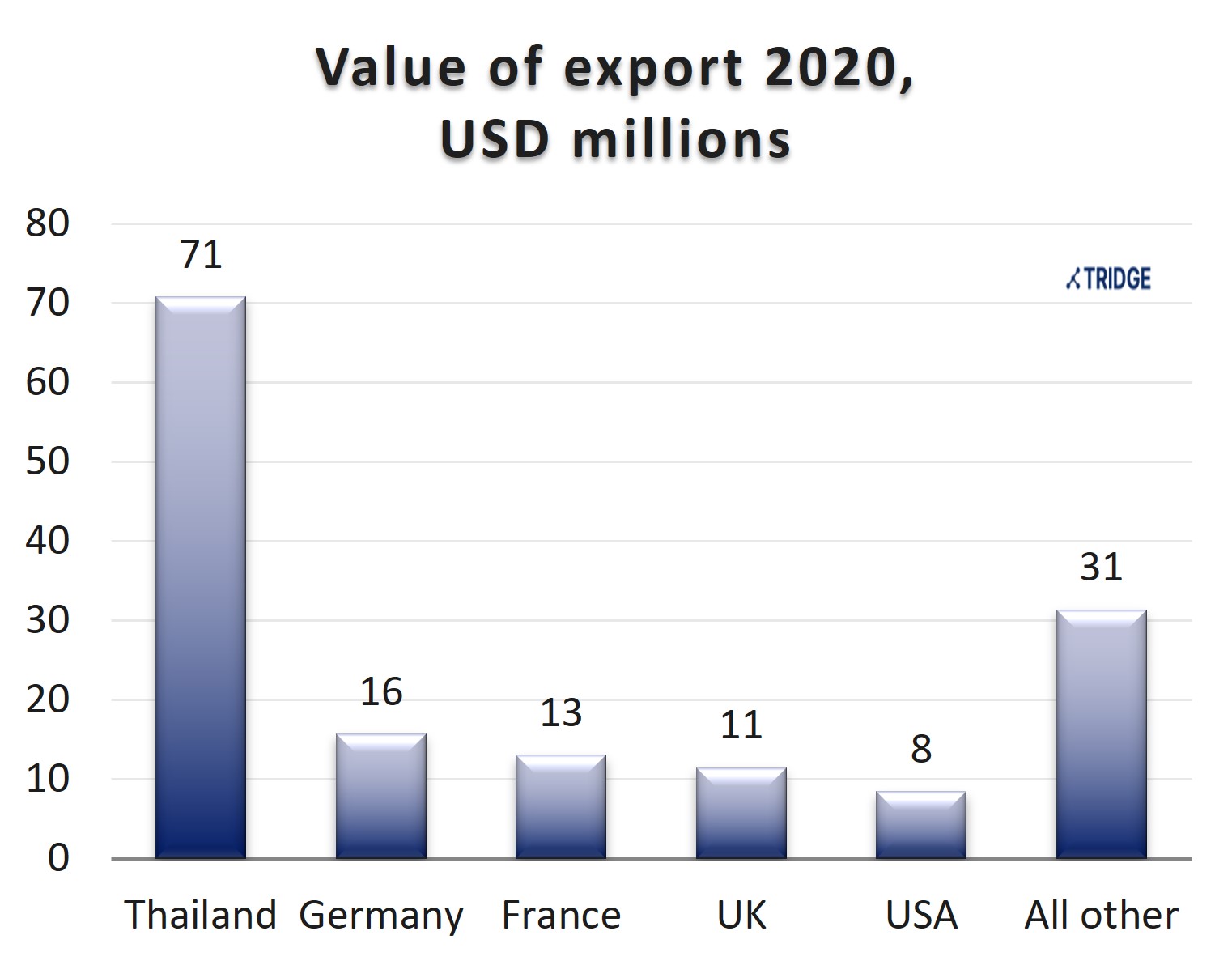How Covid Changed the Maldivian Tuna Industry

Overview of the Maldivian tuna industry
The Maldives being a small-island country, 99% of the country’s 90.000 km2 territory consists of water. As such, it is only natural that the Maldives’ main domestic protein source and main export is fish of which the single most important one is tuna. In 2016, the Maldives had the highest fish consumption per capita in the world at 142 kg and in 2019 around 134 thousand MT of tuna was landed in the Maldives. The production volume varies greatly from year to year with 167 thousand MT being the highest and 98 thousand in 2009 the lowest since the turn of the century. In 2021, the normal two annual seasons for yellowfin in Mar-April and Oct-Nov simply never arrived according to Shafin Ahmed, CEO of the tuna exporting company Big Fish Maldives. Mr. Ahmed further explains that local fishermen are under the impression that the abundance of yellowfin tuna runs in 5-6 year cycles in relation to El Niño and that The Indian Ocean Tuna Commission (IOTC) have found signs of decreased tuna stocks.
A noteworthy feature of the Maldivian tuna industry is that every single fish is caught solely using handline or pole and line, which minimises the disturbance of the ecosystem and results in the Maldivian fishing industry having the lowest carbon footprint in the world. The two most common tuna species caught commercially are skipjack and yellowfin, of which the latter is considered a high-end product that in 2020 was valued at USD 22.44/kg on average - more than 16 times higher than the USD 1.4/kg price of skipjack.
Changes in export patterns
Between January and October 2021, the export volume of tuna increased 34% YoY from 41 thousand MT in 2020 to 56 thousand MT, of which 41.5 thousand MT was skipjack and 14 thousand yellowfin. The main destination of exports is Thailand that in 2020 imported USD 71 million worth of tuna from the Maldives and held a 47% share of the total USD 152 million exports. Following Thailand are Germany, France, UK and USA while the total number of export destinations in 2020 was 41, down by 9 countries compared to 2019.

Data source: Maldives Customs Service

Shift in industry focus during Covid lockdown
In 2020, the global uncertainty surrounding Covid increased demand for protein sources with long shelf life, for which the compact tuna cans catered perfectly to. Mr. Ahmed explains that many of the fishing vessels that shifted from yellowfin to skipjack did not return to yellowfin fishing after the lockdowns in Europe and the Maldives stopped. Indications of this are found in data from Maldives Customs Service revealing that the proportion of skipjack in total tuna exports increased 3.5 percentage points YoY in January-October 2021, and that tuna exports to Thailand increased 23.21% from USD 57.5 million in 2019 to USD 70.9 million in 2020.
Innovation key to hedging against market challenges
Mr. Ahmed points to expansion of frozen storage facilities and value-addition to frozen products as key to hedge against future external market shocks. Furthermore, he adds that innovation and the creation of new income streams, in the form of delivery services by fishmongers and restaurants in export destination markets, likely will help Maldivian tuna export to continue, in the event of new lockdowns in the coming time. Considering these developments and plans of increased promotional efforts focusing on environmental and social sustainability of Maldivian tuna, Mr. Ahmed remains hopeful that despite low landings of yellowfin tuna in 2021, the Maldivian tuna industry is well-equipped to achieve a good export year in 2022.
Sources
Interview with Shafin Ahmed, CEO at Big Fish Maldives
FAO’s Fishery and Aquaculture Country Profiles: The Republic of Maldives
India Ocean Tuna Commission Statistics
IOTC: Status summary for species of tuna
Maldives Customs Service Statistics
Maldives Monetary Authority: Monthly Statistics


